Samsung QN70F is quite a decent television from the mid-range segment. Its strongest point is definitely the smoothness of the picture – thanks to the 144 Hz panel, low input lag, and a plethora of gaming features, we have here a recipe for an almost perfect gaming screen. It also performs well for sports fans – the picture is fast, clear, and there are no tears. In terms of picture quality – it’s really not bad at all. The VA panel provides good blacks, brightness is above average, and colours look great after calibration. Samsung advertises the QN70F as Neo QLED, meaning Mini LED, and in a sense, you can view it that way – but only partially. The backlighting is edge-lit, so it is far from being a full-fledged Mini LED with local dimming. It’s a shame, as marketing has its influence, and the user may feel somewhat misled. Additionally, there are minor shortcomings – no USB recording, no DTS support. But despite everything, the QN70F leaves a really good impression. It may not be a “true” Mini LED, but for its price, it is a solid piece of television – especially for gamers and those who enjoy fast, dynamic content.
- Matching (Score)
- Our verdict
- TV appearance
- Where to buy
- Contrast and black detail
- HDR effect quality
- Factory color reproduction
- Color reproduction after calibration
- Smoothness of tonal transitions
- Image scaling and smoothness of tonal transitions
- Blur and motion smoothness
- Console compatibility and gaming features
- Input lag
- Compatibility with PC
- Viewing angles
- TV efficiency during daytime
- Details about the matrix
- TV features
- Apps
- Playing files from USB
- Sound
Samsung Neo QLED QN70F / QN74F / QN77F vs SONY BRAVIA 3
Direct compare
Check the best price offer:
Samsung Neo QLED QN70F / QN74F / QN77FQN70F / QN74F / QN77F
BRAVIA 3 / K-(XX)S3

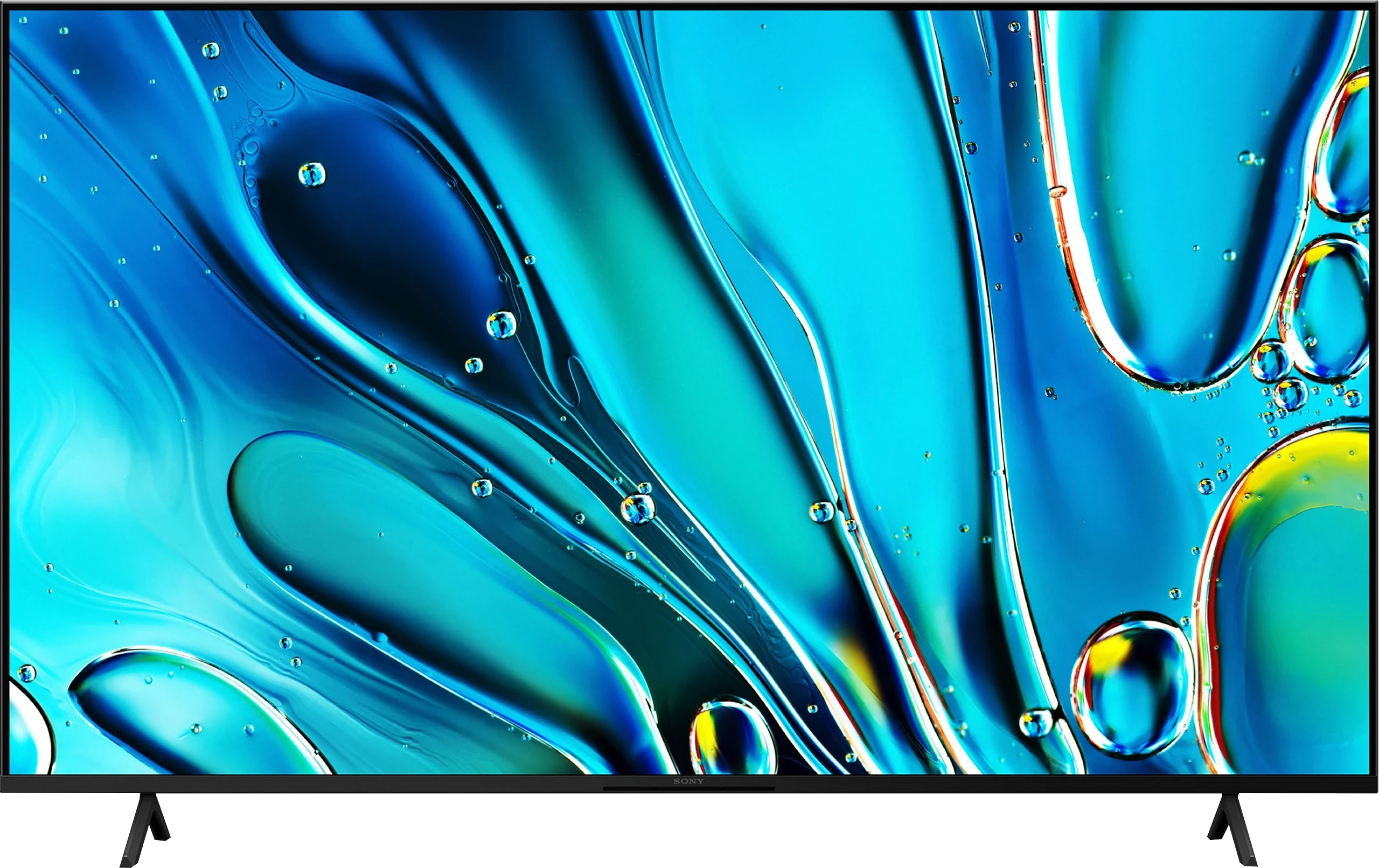
Panel type: LCD VA
Resolution: 3840x2160
System: Tizen
Model year: 2025
Complete the survey to find out the result

Panel type: LCD IPS
Resolution: 3840x2160
System: Google TV
Model year: 2025
Complete the survey to find out the result

Overall rating
7.1
6.0
Movies and series in UHD quality
6.7
5.4
Classic TV, YouTube
6.6
5.3
Sports broadcasts (TV and apps)
6.7
5.7
Gaming on console
8.5
6.4
TV as a computer monitor
8.2
6.0
Watching in bright light
6.3
4.9
Utility functions
7.2
6.6
Apps
8.7
9.6
Sound quality
6.4
6.5
Complete the survey to find out what fits your preferences
Advantages
Nice black and contrast
Above average panel brightness
High refresh rate of 144Hz
Many features for gamers: ALLM, VRR, Game Bar etc.
Low input lag
4 HDMI 2.1 ports
Advanced and smooth Tizen operating system
Super slim design
Google TV system – a vast library of apps and services
IPS panel with good viewing angles
Enhanced colours – (91% DCI-P3 colour gamut)
Supports Dolby Vision
Good upscaling – lower quality materials look surprisingly good
Excellent input lag and ALLM mode
Very good PC compatibility – supports 4:4:4 chroma, excellent font readability
Two remote controls included – modern minimalist and classic with a numeric keypad
Very good built-in media player – supports a wide range of files, even less common ones like HEIC
Thin bezels and modern design – a significant step forward compared to X75WL
Supports Dolby Atmos and DTS:X
Disadvantages
No USB recording feature
No DTS format
Issues with the HGIG function (for gamers)
Symbolic local dimming (Is this really MINI-LED?)
Tragic black - IPS matrix without local dimming
Limited brightness (approx. 350 nits), the image in HDR mode is not very appealing
Issues with backlight uniformity
The Google TV system can stutter
Lack of recording function from built-in tuners to USB memory
Our verdict
Sony Bravia 3 is a television that brings several important improvements over its predecessor, while remaining true to its core. The biggest change is the design – slim bezels and sturdy metal legs give it a modern appearance that fits much better in a living room than the X75WL. Improved colours thanks to the PFS filter and really good upscaling should also be noted. It is particularly in lower quality content, especially in classic SDR, that the Bravia 3 shows its best side – colours look pleasing, the image is clear, and thanks to the IPS panel, viewing angles are at a very good level. It is perfectly suited for the role of a “classic” television receiver, where the convenience of watching from different spots in the room and decent quality of everyday content matter. A huge advantage remains the Google TV system. During our tests, there were times when the interface did not always work as smoothly as we would have liked, and some features could freeze. However, despite these imperfections, the presence of Google TV is a significant plus – access to thousands of applications and a full streaming library compensates for minor shortcomings. Unfortunately, what was weak in the X75WL remains weak here as well. The IPS panel has very low contrast and does not offer local dimming, making watching films in a dark room quickly lose its appeal – black resembles grey and effectively detracts from the enjoyment of the viewing experience. Additionally, the option to record content to USB, which was available in its predecessor, has been dropped. It is hard not to notice this and not add it to the list of downsides.
So who is the Bravia 3 for? Primarily for those looking to enter the world of Sony televisions at a potentially low price and who also appreciate the Google TV system. However, it is not the most attractive option in its class – competitors in this budget can offer models with Mini-LED backlighting, whose images perform several times better in terms of contrast and HDR. Therefore, the Bravia 3 is worth keeping in mind, but mainly when a solid discount is available. At regular price, it will be very difficult to stand out against its more cost-effective rivals.
TV appearance




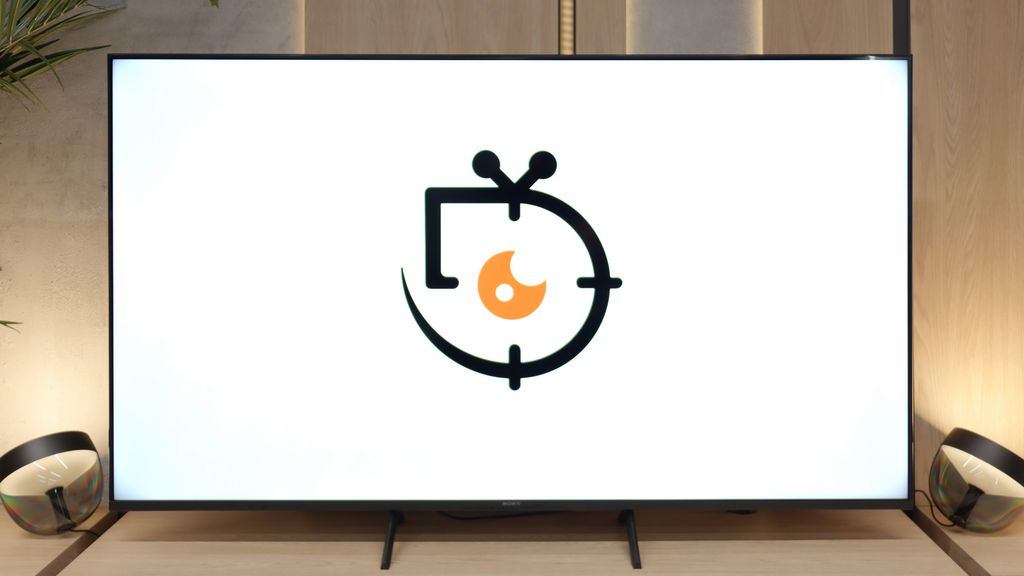
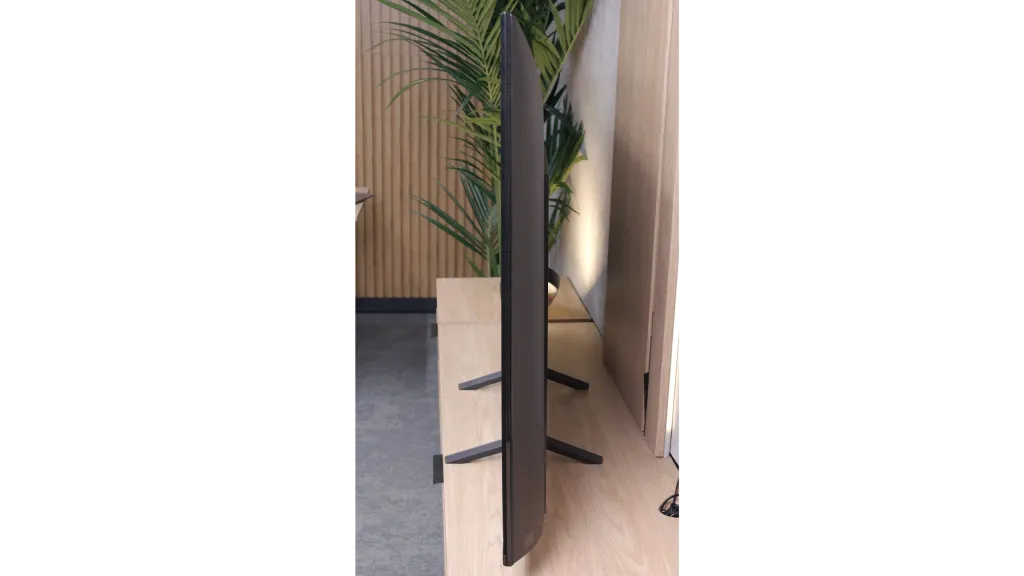
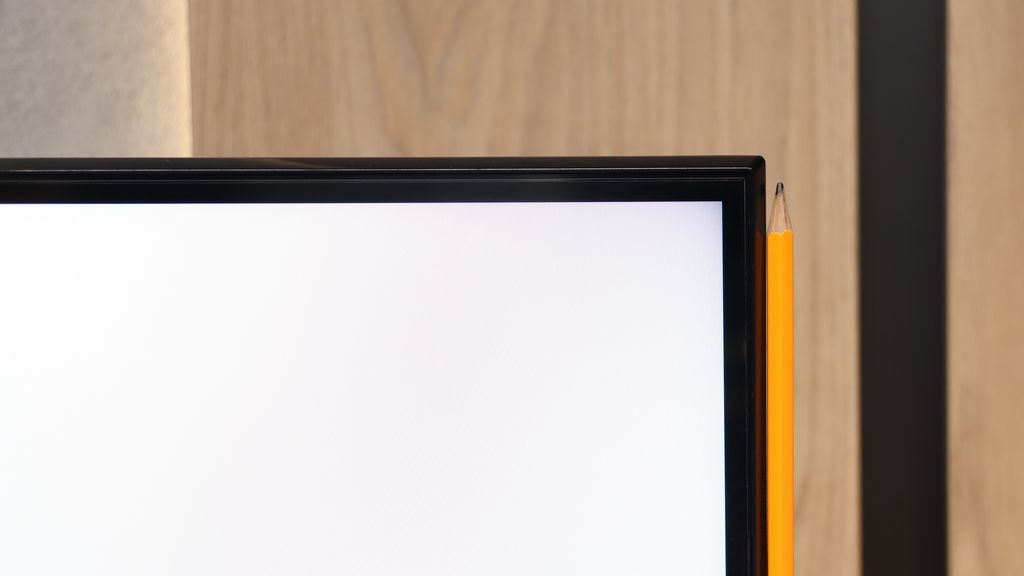
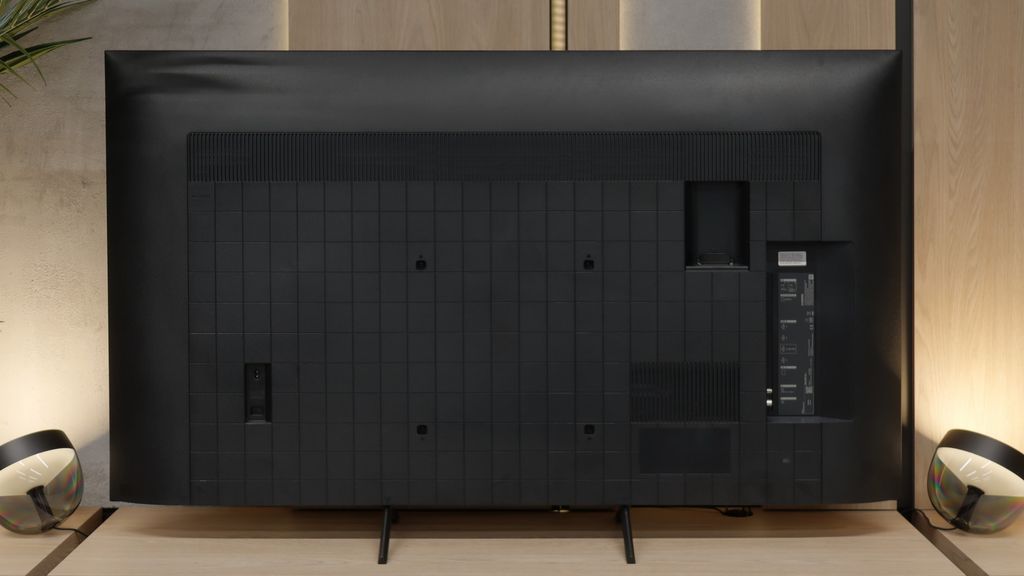
Contrast and black detail
6.2/10
2.2/10
Local dimming function: Yes, number of zones: 20 (1 x 20)
Local dimming function: No
Contrast:

Result
9,200:1

Result
7,000:1

Result
5,350:1

Result
5,700:1

Result
5,300:1

Result
1,150:1

Result
1,150:1

Result
1,050:1

Result
1,050:1

Result
900:1
Halo effect and black detail visibility:


The QN70F is equipped with a VA panel that offers a high native contrast – this is already a good starting point for black levels, especially during evening viewing. However, its capabilities do not theoretically end there. The television is branded as Neo QLED, which indicates the presence of Mini LED technology and a local dimming system. And indeed – the QN70F has this function. The problem is that we are not talking about classic local dimming with LEDs positioned directly behind the panel. Instead, edge lighting has been implemented with an overall dimming mechanism known as global dimming. The effect of this is that instead of selective brightness control in individual zones, the entire screen is slightly dimmed when a dark scene appears. In practice, this means that the contrast is average compared to Mini LED models that offer true local dimming. The black levels are not bad – thanks to the VA panel itself – but one cannot speak of precise light control like that provided by advanced systems with multiple zones. This raises the question: is the QN70F series really a Mini LED television, or just a marketing variation on the Q70 series? Looking at the technical aspects – it is hard to consider this model a full-fledged representative of this technology. But in everyday use, the black levels appear decent and for many people may be fully satisfactory.
The Bravia 3 in most variants, including the 65-inch model we tested, uses an IPS panel and unfortunately, this is not the best news for those who value depth of image and true velvety blacks. This technology has its advantages, as it offers decent viewing angles, but these come at the cost of very low contrast, which is particularly noticeable during evening viewings when we expect the screen to go dark where it should. However, this is not the end of the list of problems. Our unit also exhibited noticeable unevenness in blacks, which exacerbates the effect of their shallowness. For example, in a scene with a helicopter, the blooming in the corners of the screen and pronounced vignetting are clearly visible.
It's hard not to think that even a simple local dimming system could have salvaged the situation and added a touch of drama to the image, which is lacking here. Unfortunately, Sony has decided against such a solution, and as a result, we have a repeat of last year's issues. The Bravia 3 is therefore not a television that will charm you with cinema-like black depth. At night, instead of intense blacks, we are likely to see a grey pretending to be darkness, which may disappoint more demanding viewers.
HDR effect quality
5.6/10
4.6/10
Luminance measurements in HDR:

Result
619 nit

Result
449 nit

Result
500 nit

Result
422 nit

Result
483 nit

Result
316 nit

Result
327 nit

Result
369 nit

Result
236 nit

Result
379 nit
Scene from the movie “Pan” (about 2800 nits)


Scene from the movie “Billy Lynn” (about 1100 nits)


Static HDR10


Dynamic: HDR10+
Dynamic: Dolby Vision


HDR luminance chart:
SONY BRAVIA 3
HDR luminance
Samsung Neo QLED QN70F / QN74F / QN77F
HDR luminance
The QN70F is a television that can pleasantly surprise when it comes to brightness. In ideal testing conditions, it reaches up to 800 nits, which – for this price range – is a really solid figure. Of course, this result comes from measurement charts, so we decided to check how it performs in practice, with real films. Here, the television somewhat tempers its capabilities. In most tested scenes – for example, in "The Meg" – the actual HDR brightness hovered around 500 nits. This is still a decent result, allowing for enjoyment of HDR effects, although it is far from perfect. On the other hand, we have a QLED screen with a layer of quantum dots, which means very good colour reproduction capabilities. The colours are vibrant and saturated. The QN70F covers about 94% of the DCI-P3 colour space, and in the wider BT.2020 palette, it exceeds 75%, so in this respect, there is nothing to be ashamed of.
Bravia 3 does not hide the fact that it belongs to the group of televisions that are rather modest in terms of brightness. Our measurements showed around 370 nits, which is a value teetering on the edge of where one can still speak of any HDR effect. For some, this is an acceptable level, while for others it is rather typical for SDR content, where spectacular highlights or vivid contrasts are not expected. The impression is that this is not a television for those focused on the highest image quality in demanding cinematic content. However, this does not mean that we cannot find any advantages here. Compared to its predecessor, the X75WL, Bravia 3 has gained an additional PFS filter, which works similarly to solutions known from QLED technology. Thanks to this, the DCI-P3 colour palette has been significantly widened and reaches over 91 percent, which in practice results in more saturated colours and a more pleasing image texture. As a result, even everyday content looks somewhat livelier, and films and series can surprise with vibrant visuals, despite limitations in brightness itself.
Factory color reproduction
7/10
5.8/10


Factory Mode
After calibration


Factory Mode
After calibration
We tested the QN70F in its best default picture mode, which is Filmmaker Mode. I must admit that in this particular test unit, the factory settings performed quite well. The image was calm, natural, and despite minor deviations – pleasant to watch. The biggest flaw was a slight dominance of red in the white balance, which caused a slight pinkish hue across the entire scene. However, this was not a glaring defect – rather subtle and only noticeable when directly compared to a properly calibrated screen. A somewhat larger issue arose in the brightness characteristic. The television tends to underestimate the brightness of parts of the image that should be displayed more brightly. As a result, some details can appear slightly muted – not so much lost completely, but not resonating as clearly as they should. Nonetheless, as far as televisions in this category and in these settings are concerned – we consider the result a good starting point for further calibration.
Sony Bravia 3 was primarily tested in film mode, which immediately proved to be the best choice among the factory settings. It is not a perfect picture, but compared to the eco mode that the television offers right out of the box, the difference is clear and positive. In film mode, one can notice a certain problem: the image appears too warm, which results from a lack of blue colour in the white balance. Despite this, in SDR content, the final effect can still be considered quite decent and satisfactory for everyday viewing. Much more serious errors occur in HDR materials. The Color Checker analysis showed considerable deviations, and poor brightness management, combined with limited colour gamut coverage, further exposes the shortcomings of the image in this mode. All of this makes HDR on the Bravia 3 appear unconvincing and can spoil the impression left by the quite decent SDR content setting. Fortunately, this is not an insurmountable situation. Various errors can be somewhat mitigated, and some can even be fully corrected through professional calibration. Therefore, we decided to check how the television would perform after such adjustments.
Color reproduction after calibration
8.5/10
7.5/10




After calibration, the QN70F shows that it can offer a truly high level of colour reproduction. The white balance was nearly perfectly aligned, and the values in the Color Checker test dropped below level 3 – meaning below the threshold at which the average eye can perceive differences. The image looks natural, and the colours are faithfully rendered, without excessive saturation or the coolness known from factory settings. It must be admitted that Samsung provides very extensive calibration options – not only for enthusiasts but also for professionals. The QN70F takes advantage of this potential and, after proper adjustment, can come close to significantly more expensive models in terms of colour accuracy. The only thing that can still be nitpicked is the brightness characteristic. There is still a tendency to lighten the smallest areas of the image – particularly those that should remain darker. However, this is a design feature of this model, not a calibration error. Despite this, the final effect definitely deserves recognition.
The calibration allowed us to extract significantly more from the Bravia 3 than we could have expected at the beginning. Firstly, it managed to compensate for the deficiency of blue, which had previously caused a noticeable warming of the image. After a slight adjustment to the white balance, most of the errors in the Color Checker measurements for SDR content virtually disappeared. The white tones became more natural, and the brightness management in gamma stabilised to an almost ideal level, not exceeding the threshold of human perception. Thus, it can be confidently stated that in SDR content, after a few adjustments to the settings, the Bravia 3 performs remarkably well. Significantly worse, although still definitely better than before calibration, are HDR contents. The white balance was brought into order, however, the limitations of the IPS panel are insurmountable. The lack of local dimming means that even the smallest elements can be overexposed, which immediately stands out. Colour-wise, the effect is also improved, though far from perfect – many errors still exceed the threshold of four or even five delta E units, meaning they remain visible to the human eye. It was already clear earlier that the Bravia 3 is not a television designed to impress with HDR quality. Nevertheless, it is gratifying that in SDR content, after calibration, the image can look truly excellent, and in this category, the television pleasantly surprised us.
Smoothness of tonal transitions
9/10
8/10












In terms of the fluidity of tonal transitions, the QN70F performs really well. Gradients are smooth, and colours blend into each other without obvious thresholds or banding. Even in more difficult movie scenes – particularly those that are very dark – any possible imperfections are minimal and you really have to make an effort to notice them. In regular viewing, most users should not encounter any issues with colour merging. The image looks clean and coherent, without artificial smoothing or distortions. This is another aspect in which the QN70F pleasantly surprises.
In terms of the fluidity of tonal transitions, the Bravia 3 performs really well. In brighter scenes, we did not notice any significant errors – the screen handles the blending of colours almost flawlessly and does not create artificial contours that can spoil the viewing experience. Similarly, in darker segments, there are no major issues with colour gradation, although another problem arises here. Strong brightening and uneven backlighting of the panel in dark scenes make it difficult to assess the gradation itself clearly, as the effect is spoiled by the unevenness of the image. However, when we focus solely on the blending of colours, the result should be considered very good.
Image scaling and smoothness of tonal transitions
6.9/10
7/10
Smooth transition function


Image without overscan on the SD signal


Samsung QN70F offers a distortion reduction feature that enhances the smoothness of tonal transitions. In "Standard" mode, it works quite well – it smooths out problematic transitions without significantly interfering with the structure of the image. Film grain is somewhat reduced, but details such as texture and skin structure remain visible. The "High" mode is much more aggressive. The smoothing is stronger, but it comes at the cost of a noticeable loss of detail. Therefore, in practice, we recommend sticking with the "Standard" setting or completely turning this function off. The improvement in gradation may be less spectacular, but the image retains more naturalness.
When it comes to scaling low-quality content, the QN70F performs very well. Tests with lower resolution images were really very good. Despite slight edge ringing, everything looks clean and clear, even if the original content was very poor. It’s just a pity that the television has an issue with overscan, which cannot be completely turned off. As a result, images with very low resolution may be slightly cropped, which is mainly noticeable on subtitles or interfaces.
Bravia 3 brings something more to the Sony TV family than just a shared name. It stands out primarily for its ability to enhance the quality of weaker materials thanks to the processor used. Of course, we won’t find the advanced XR chip known from more expensive models here, but even so, it must be admitted that the image in lower resolutions looked surprisingly good. The scaling worked effectively, and most parts of the screen were free from the typical excessive edge tearing found in budget constructions.
Attention should also be paid to the function that improves the smoothness of tonal transitions. In the high setting, it works really well, effectively masking gradation imperfections without significant detail loss. It does happen, however, that the algorithm overly smooths elements that should remain sharp – for example, faces – but overall, the effect is beneficial. The best results were achieved precisely at the highest setting, and this option could be recommended to those watching lower quality content.
Blur and motion smoothness
7.5/10
5/10

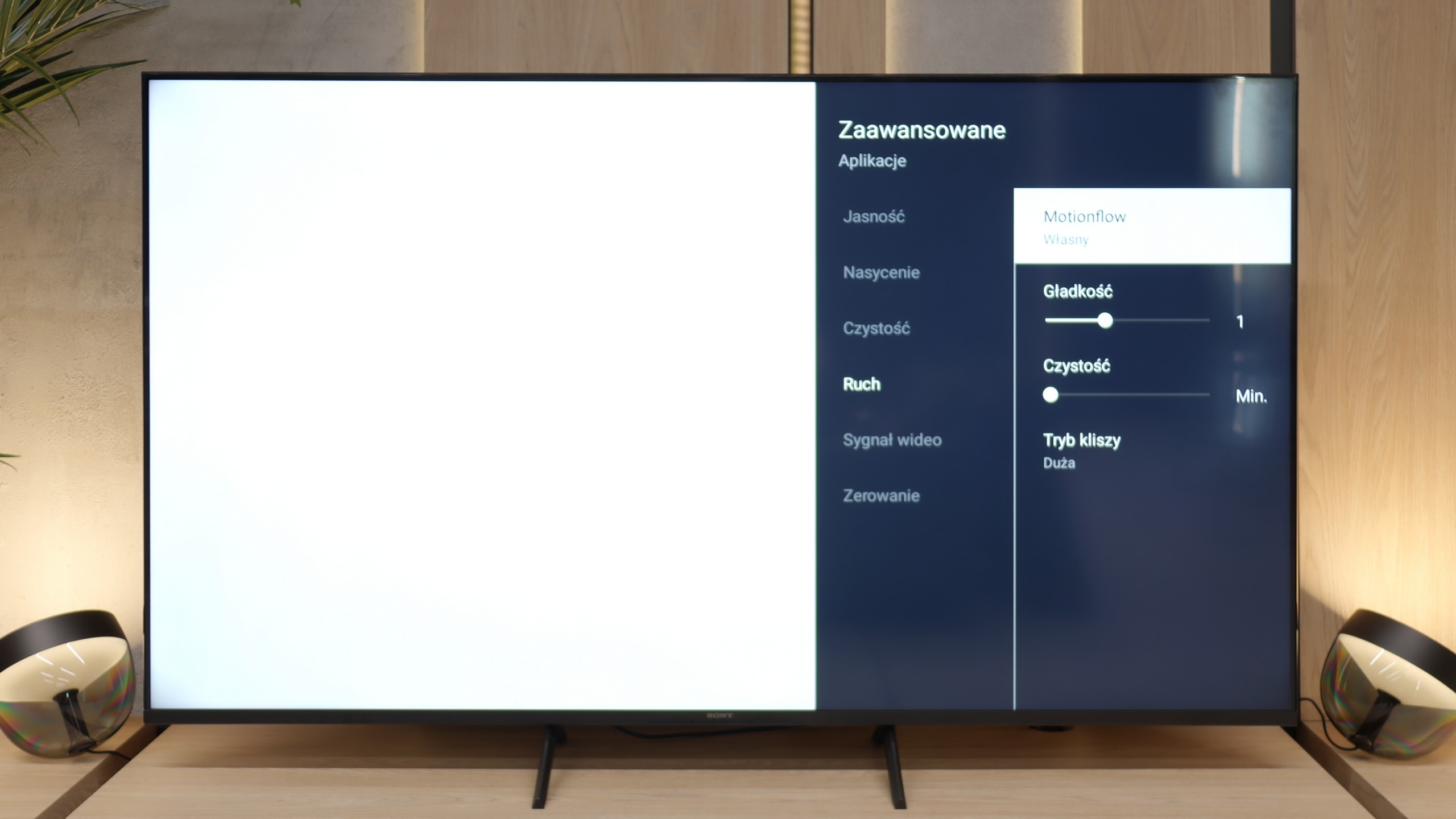
Blur (native resolution, maximum refresh rate):



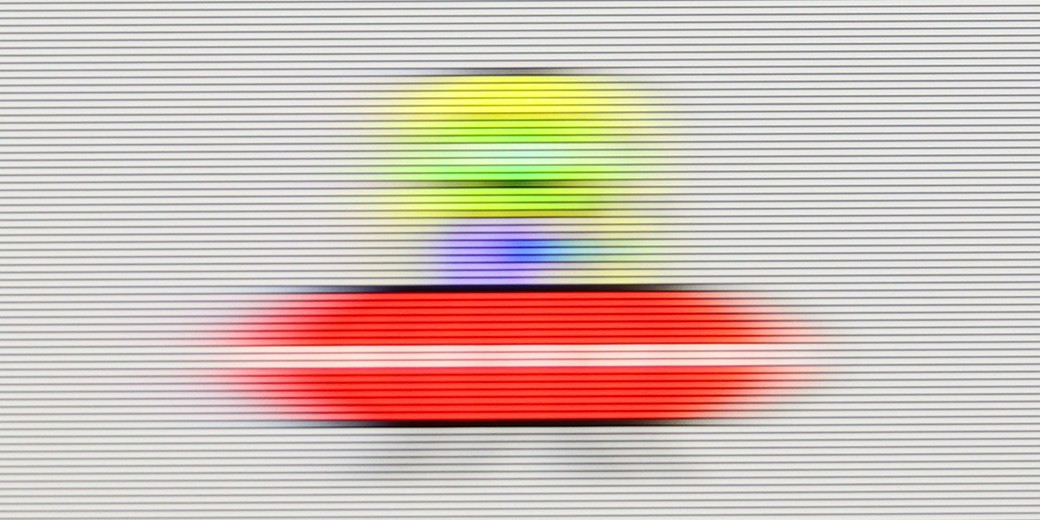
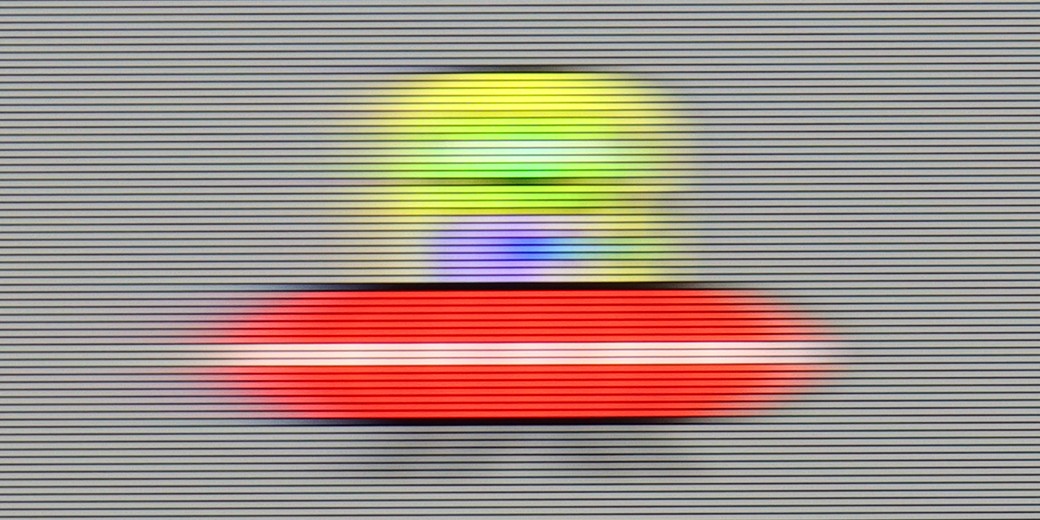
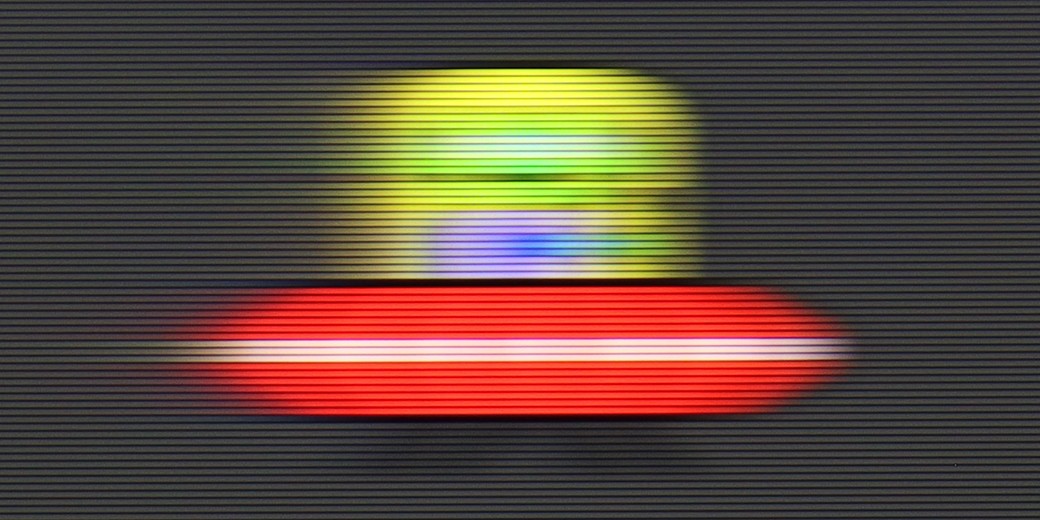
Blur (BFI function enabled):
Image flickers in this mode



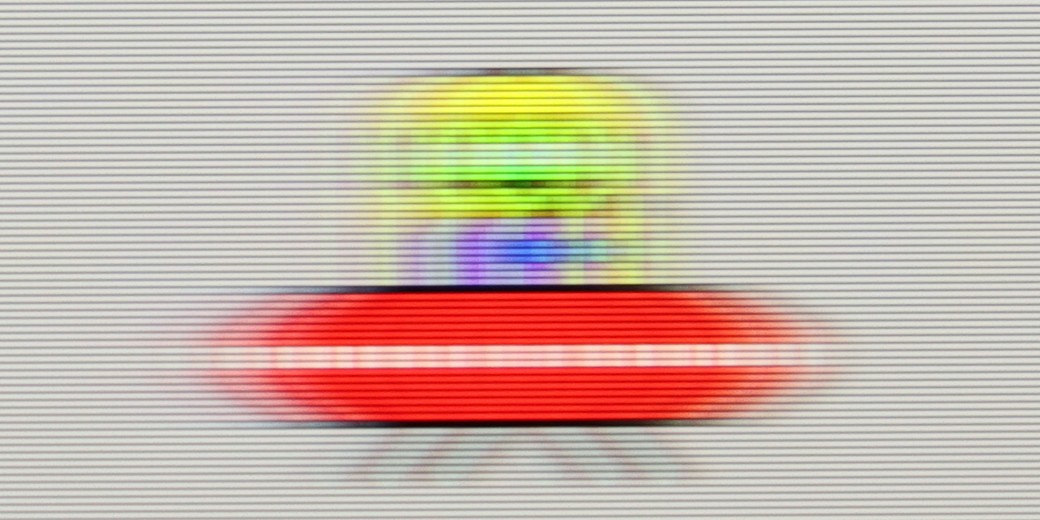
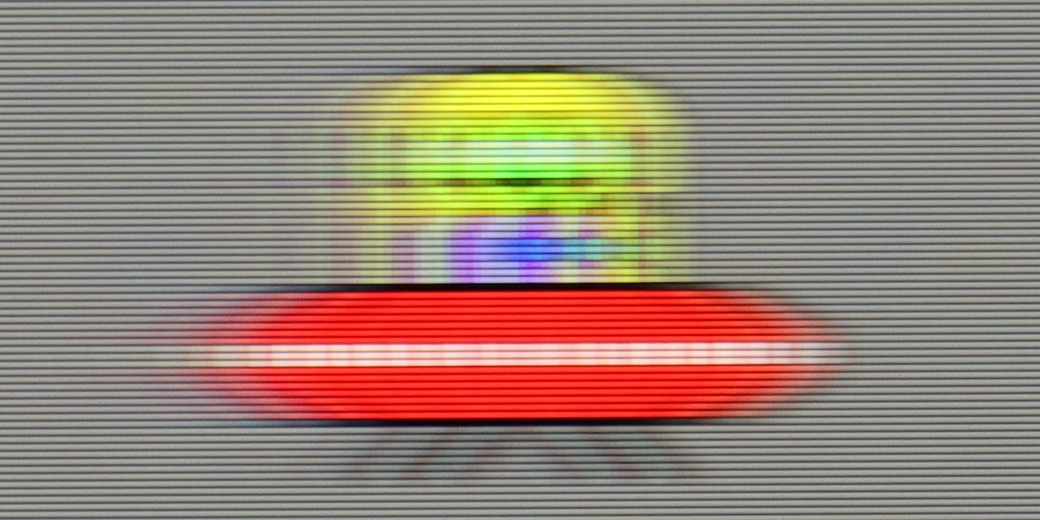
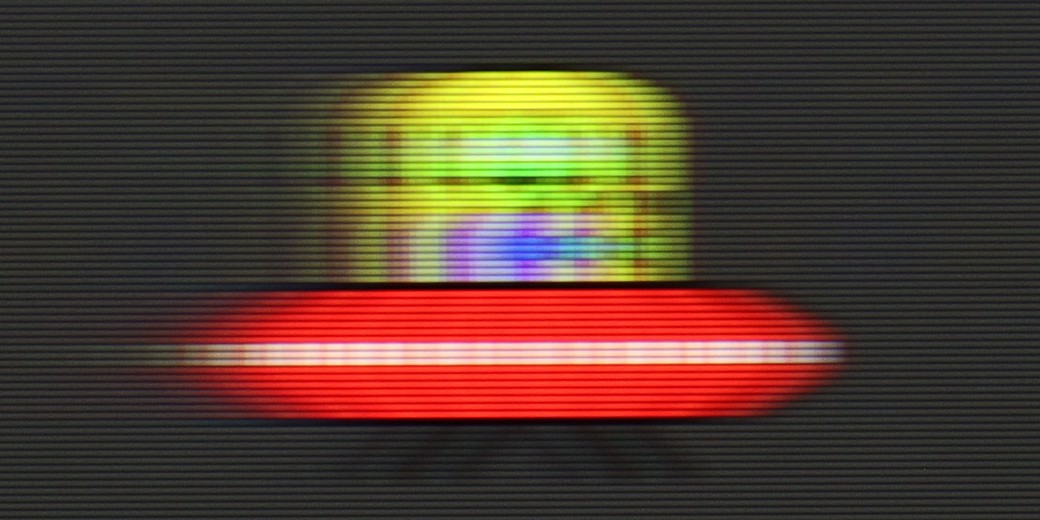
Smużenie (4K 144Hz):



Smużenie ():
The QN70F is a television with a refresh rate of 144 Hz, which in itself places it among the top when it comes to image fluidity. Whether we are watching dynamic sports broadcasts or playing on a console – the picture looks very good. There is no sense of stuttering, choppiness, or the typical "tearing" associated with weaker models during fast motion. Samsung also allows you to adjust the fluidity to your own preferences. In the picture clarity settings, we find options such as blur reduction and judder reduction – each of which we can adjust independently. This is especially useful when watching content with a lower frame rate and wanting to give it a smoother, more theatrical character – or conversely, to maintain the natural cinematic "feel" of 24 frames.
The fluidity of motion has never been a strong point of televisions equipped with 60 Hz panels, and the Bravia 3 is no exception. Nevertheless, Sony has added something that may appeal to those more sensitive to the way images are displayed. We are talking about the proprietary motion smoother, Motion Flow, which offers users a considerable range of adjustment options. Thanks to it, one can make the image smoother, even theatrical, or stick to a more cinematic style with the characteristic judder that many simply associate with the filmic atmosphere. These functions work with content at lower frame rates, such as films and series recorded at 24 or 30 frames per second, which are the materials we encounter on a daily basis. It is here that the motion smoother proves to be one of the most important features in everyday use of the television, and this is where the Bravia 3 performs quite well.
Console compatibility and gaming features
8.2/10
4/10
- ALLM
- VRR
- VRR range48 - 144Hz
- Dolby Vision Game Mode
- Correct implementation of HGIG
- 1080p@120Hz
- 1440p@120Hz
- 4K@120Hz
- Game bar

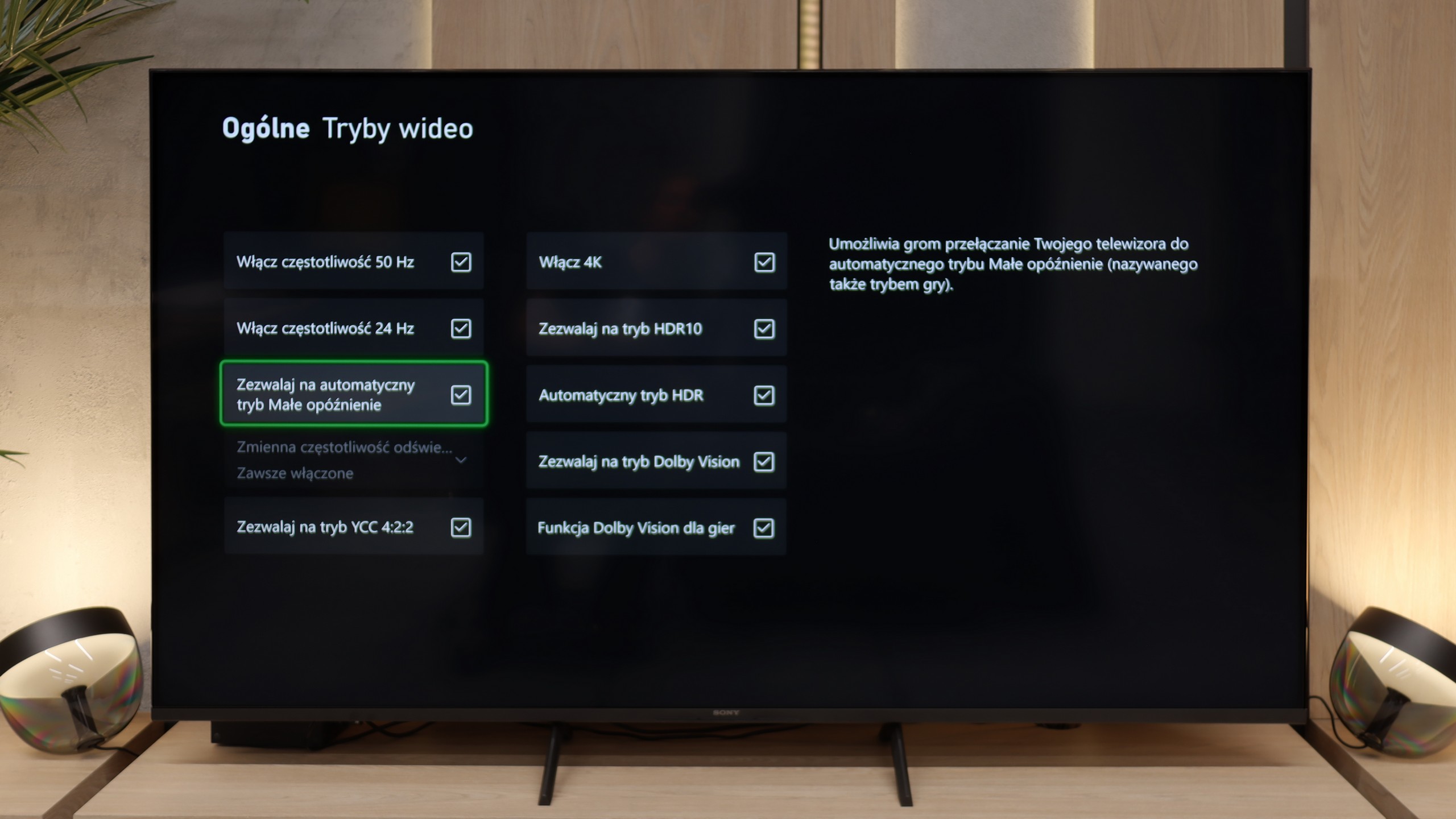

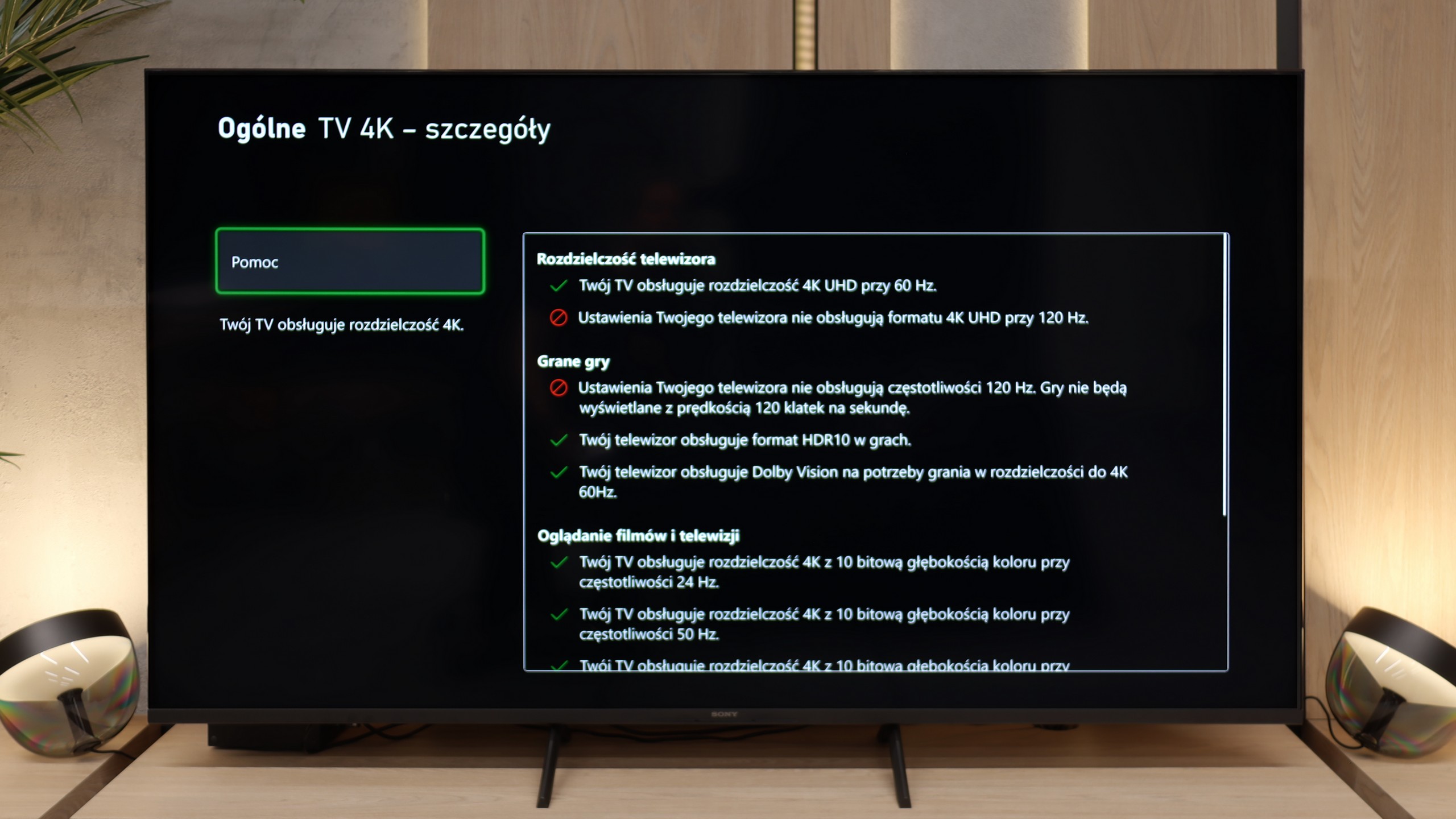

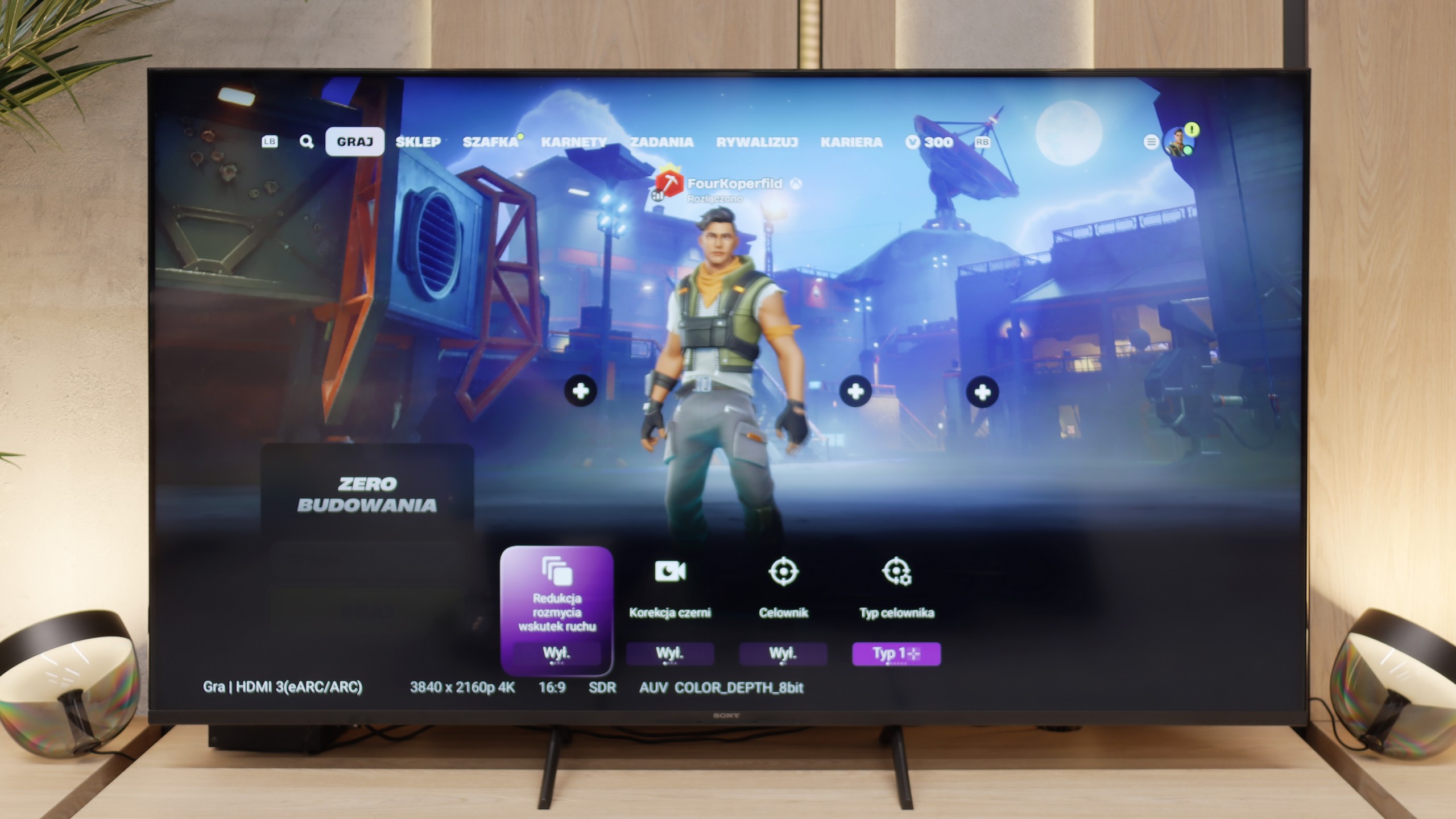

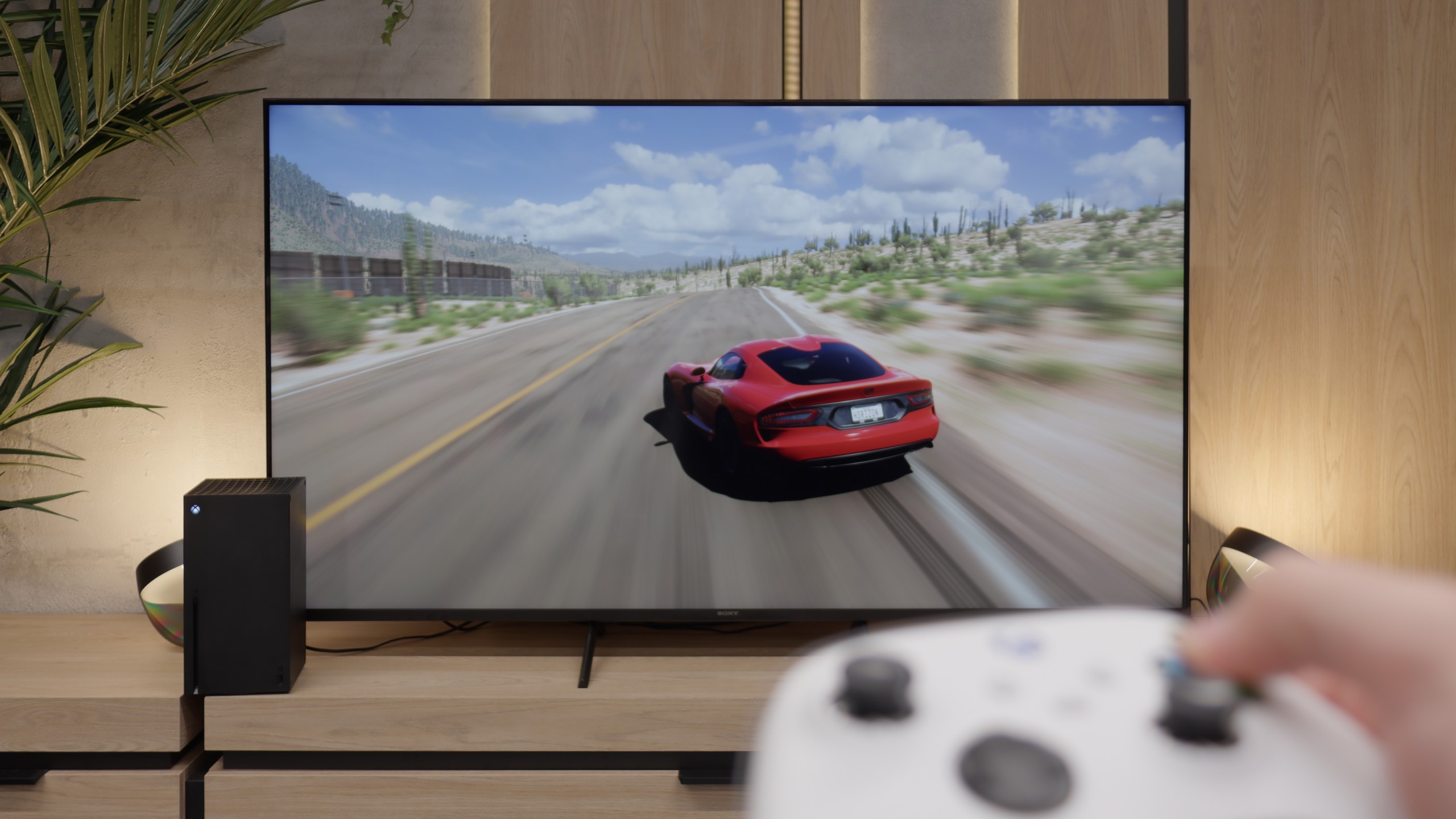
The Samsung QN70F is truly a solid choice for gamers. Here, we find as many as four HDMI 2.1 ports with full bandwidth of 48 Gbps, meaning full support for gaming in 4K at a refresh rate of 144 Hz. Additionally, it includes all the essential features we expect today: automatic game mode (ALLM), variable refresh rate (VRR), and a very well-designed, intuitive Game Bar showing information about mode, resolution, and frame rate.
Also noteworthy is the Game Motion Plus feature, which allows artificial frames to be added to games running at 60 fps or less. This works surprisingly well and in many titles – particularly those where consoles struggle to maintain a stable framerate – it improves the fluidity of gameplay without significant delay.
Unfortunately, there are some drawbacks. The lack of support for Dolby Vision mode is not surprising – it’s a standard with Samsung. However, the absence of the HGiG feature is much more disappointing. Worse still, it was removed with a software update, which may leave users who previously relied on it quite puzzled. Without HGiG, it is impossible to manually set the maximum HDR brightness from the console, resulting in some games appearing slightly washed out – especially if the television misinterprets the tonal range. Why Samsung, a brand that has set standards for gaming features for years, decided to take such a step is hard to say. At the time of writing this review, the tested television was running on software version 1110 – and frankly, if you care about full support for gamers, it’s better to hold off on updates for the time being.
Bravia 3 is not equipment for e-sports enthusiasts or fans of night marathons with a controller in hand. The lack of 120 Hz refresh rate and HDMI 2.1 ports closes the topic before it even has a chance to develop. This is a television for casual gamers who will play FIFA or racing games after work, not for someone who measures every frame in a spreadsheet. Nevertheless, Sony has added a few nice extras to ensure it’s not too sparse. ALLM works as it should, automatically switching the television to game mode (low latency). There’s even a simple Game Bar, which is clear. However, the biggest novelty here is the PlayStation Portal app. Thanks to it, you can launch PS5 games wirelessly and view them immediately on the television screen. It sounds great, but just a few minutes is enough to feel significant lag. In our opinion, it’s more of a showcase of capabilities than something that can be used every day. If someone really wants to play, it’s better to connect the console via HDMI cable and forget about wireless issues.
Input lag
10/10
10/10
SDR
HDR
Dolby Vision
QN70F does not disappoint in terms of response time either. For 120 Hz materials, the input lag hovers around 8 ms, which can be considered a very good result – especially in the context of online competition or dynamic action games. The screen responds to the movements of the controller almost instantaneously, with no noticeable delay. As a result, the gameplay is smooth and comfortable, even in more demanding titles. In this category, Samsung still maintains a high standard, and it is hard to find anything that could raise objections.
Here, the Bravia 3 shows its best side. Latencies drop below 12 milliseconds in almost every resolution and mode, so the response to controller movements is instantaneous and there is no feeling of delay. It feels as though the console and the television are speaking the same language, without unnecessary pauses or hesitations. The Dolby Vision Gaming mode is particularly noteworthy. In its predecessor, the X75WL model, using this feature was simply a pain – input lag could exceed 100 milliseconds, which effectively spoiled the enjoyment of gaming. In the Bravia 3, this issue has been completely eliminated.
Compatibility with PC
8.2/10
6/10

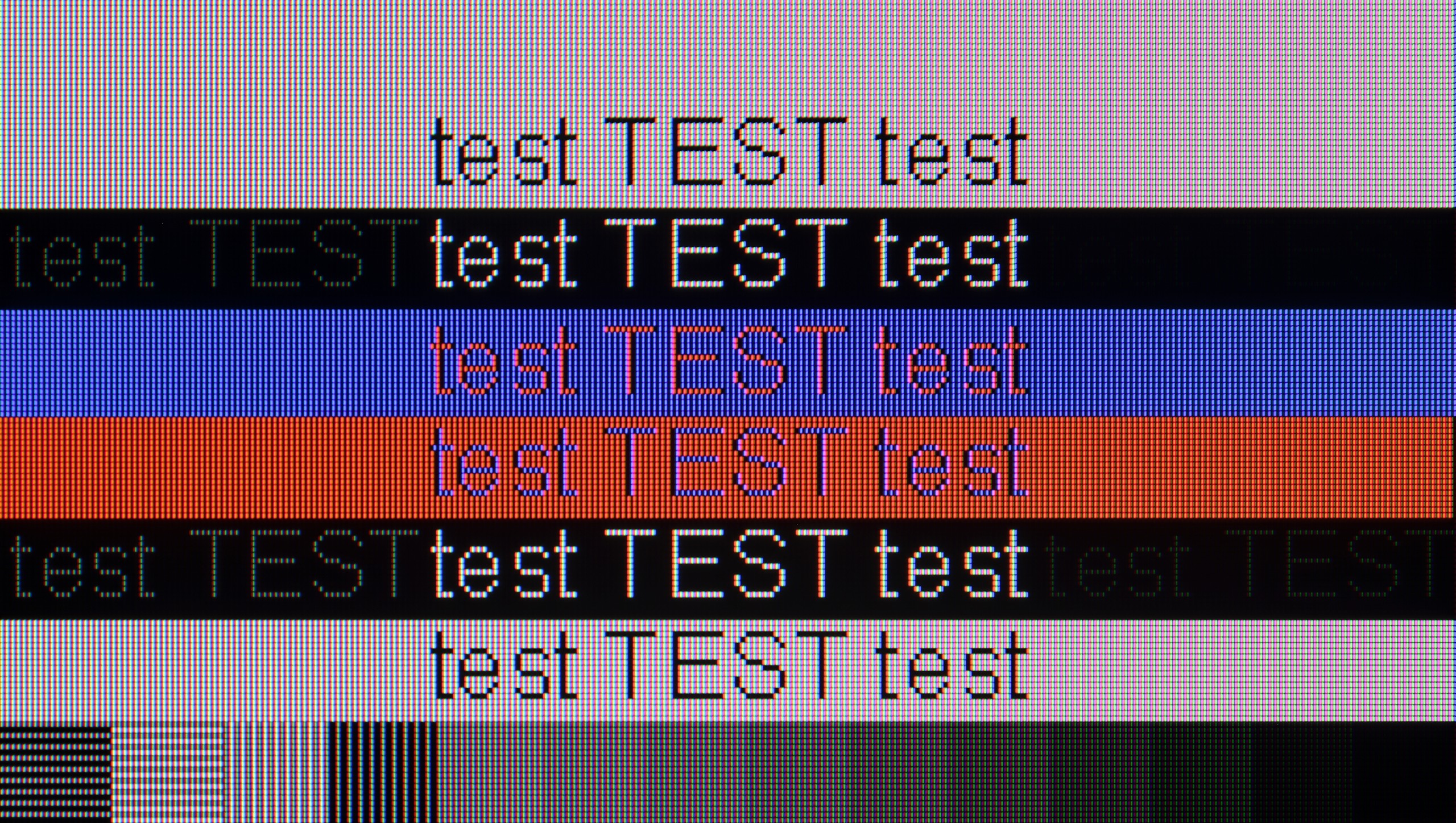
Let's start with the best aspect of connecting the QN70F to a computer – gaming. A refresh rate of 144 Hz, support for G-Sync compatible VRR, and very low input lag create the perfect recipe for an almost ideal screen for PC gamers. In this role, the QN70F truly does not disappoint – games look smooth, responsiveness is at a very high level, and everything runs stably.
However, the performance regarding text work is somewhat lacking. At a resolution of 4K and a refresh rate of 144 Hz, there is a noticeable blurriness in the font contours – text may appear slightly smeared, with a slight “layering” of the contours. This is not a problem that undermines the usability of the QN70F as a monitor, but individuals planning to do office work or text editing on this screen should keep this in mind.
The applied IPS matrix, combined with properly functioning support for chroma 4:4:4, ensures that the readability of fonts is at an excellent level. Letters appear sharp, regardless of the background colour or the content itself, so working with documents or browsing websites does not strain the eyes. In this role, the television easily deserves a very good, if not outstanding, rating, as there are not many models in this budget that perform as well. Of course, if we look at the Bravia 3 from a PC gamer’s perspective, the picture is not quite so rosy. We won't find G-SYNC or Free Sync frame synchronization with graphics cards, nor high refresh rates, so the television is not the best choice for fast-paced computer games. However, it performs excellently as a monitor for work, whether in a home office or a student room, and in this respect, it is truly hard to criticise.
Viewing angles
3.1/10
6.6/10
As for the VA panel, the viewing angles on the QN70F are typical – meaning rather average. The image quickly loses contrast and saturation when we start looking at the screen from a greater angle. Compared to IPS panels, it performs significantly worse. On the other hand – thanks to this panel, we gain better blacks and higher contrast when viewing straight on, which will be more important for many users than wide visibility from the sides.
Thanks to the use of an IPS matrix, colours do not lose intensity as quickly as in the case of screens based on VA panels. Even when watching television with a larger group, when some people sit at an angle, the image remains clear and does not appear washed out. Of course, it is not at the level offered by organic OLED matrices, where the image looks identical from almost any position, but for an LCD television, the viewing angles in the Bravia 3 are among the better ones. This provides a sense of comfort and freedom, especially in larger living rooms or during family viewings, where it is difficult for everyone to find a spot directly in front of the screen.
TV efficiency during daytime
6.3/10
4.9/10

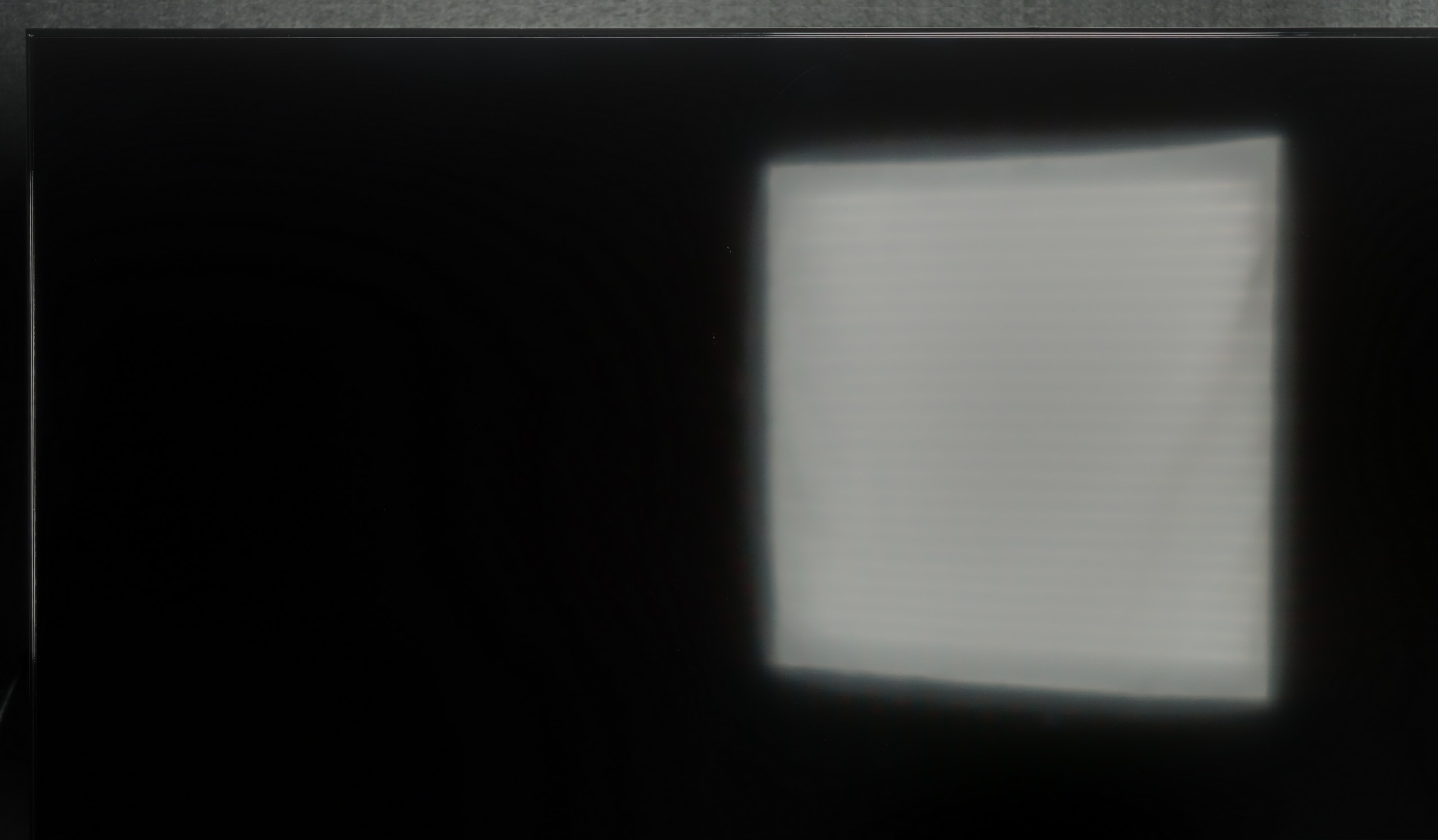


Matrix brightness
Average luminance SDR
SONY BRAVIA 3: 337 cd/m2
Samsung Neo QLED QN70F / QN74F / QN77F: 492 cd/m2
The QN70F handles a bright living room without any issues. The screen has a satin finish that effectively suppresses reflections, so there's no need to immediately draw the curtains to see anything. Even when there's plenty of light in the room – for example, with a window to the side – the picture still looks clear and vibrant. The brightness is also at a solid level. In SDR mode, the television averages around 500 nits, which is more than sufficient for daytime viewing. While it may not reach the levels of top models, in practice – for everyday television watching, sports, or YouTube – it performs very well.
Bravia 3 performs quite decently in the face of daylight. The satin coating on the panel effectively reduces reflections, and the colours do not lose their intensity when stronger external light hits the screen. As a result, in typical home conditions, with blinds open or in a living room with a larger window, the image maintains its clarity. However, it must be remembered that this is not a high-brightness television. Bravia 3 has no chance of competing with brighter models, so in very sunny rooms, there are moments when the screen simply does not stand out against intense light. In normal conditions, it will cope without problems, but in more challenging scenarios, one should not expect miracles.
Details about the matrix
Subpixel Structure:

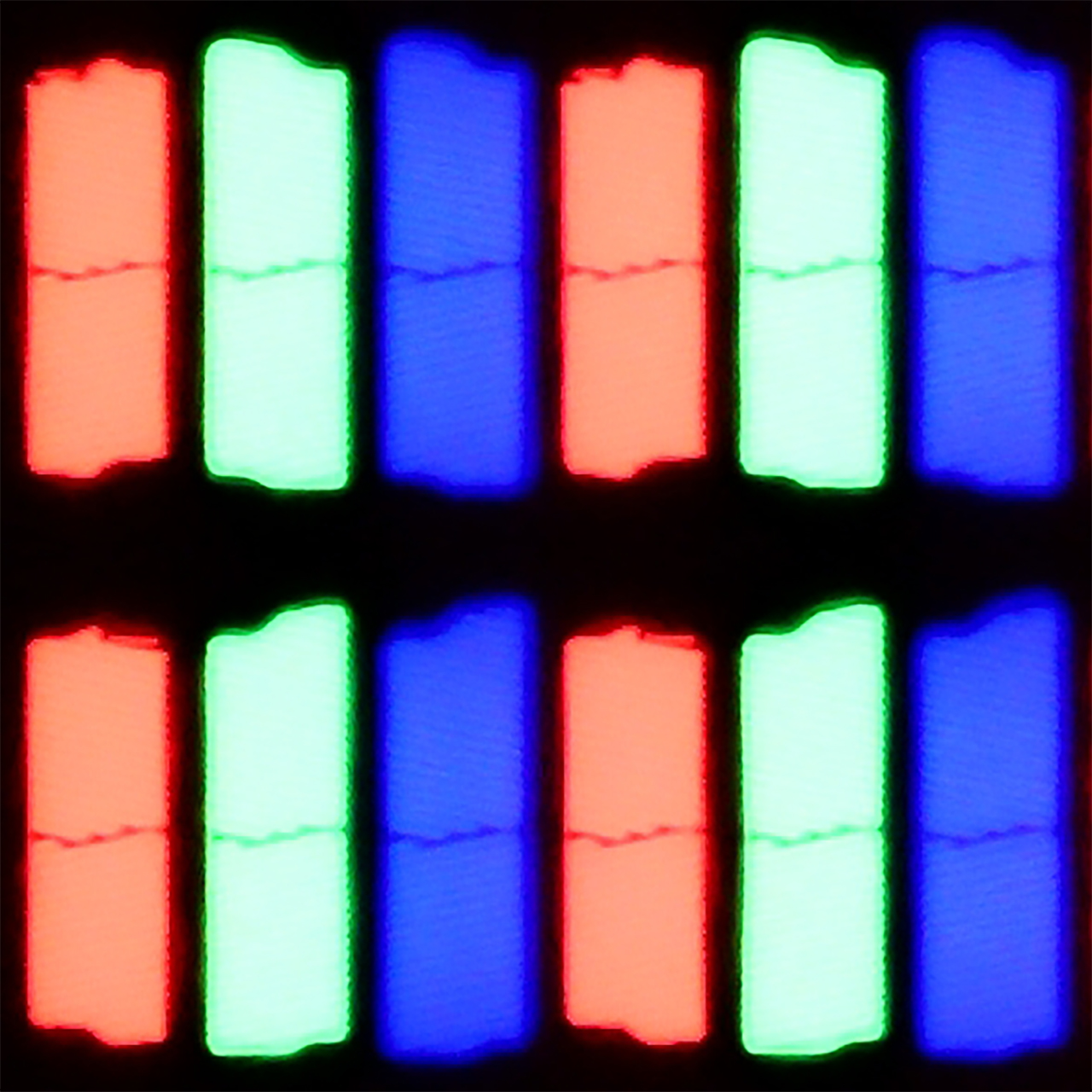
Panel uniformity and thermal imaging:


Samsung Neo QLED QN70F / QN74F / QN77F
SONY BRAVIA 3
TV features
7.2/10
6.6/10
- HDMI inputs0 x HDMI 2.0, 4 x HDMI 2.1 48Gbps4 x HDMI 2.0, 0 x HDMI 2.1
- OutputsToslink (Optical audio), eARC (HDMI), ARC (HDMI)Toslink (Optical audio), eARC (HDMI), ARC (HDMI)
- Network InterfacesWi-Fi 2.4GHz, Wi-Fi 5GHz, Ethernet (LAN) 100MbpsWi-Fi 2.4GHz, Wi-Fi 5GHz, Ethernet (LAN) 100Mbps
- TV receptionDVB-T, DVB-T2, DVB-S, DVB-S2, DVB-CDVB-T, DVB-T2, DVB-S, DVB-S2, DVB-C
Classic features:
- Recording to USB (terrestrial TV)
- Recording programming
- Picture in Picture (PiP)
- RF remote control (no need to aim at the screen)
- Backlit remote control
- Teletext
- Audio only mode
- Bluetooth headphones support
- Simultaneous Bluetooth headphones & TV audio
Smart features:
- AirPlay
- Screen mirroring (Windows Miracast)
- Voice search
- Voice search in native language
- Ability to connect a keyboard and mouse




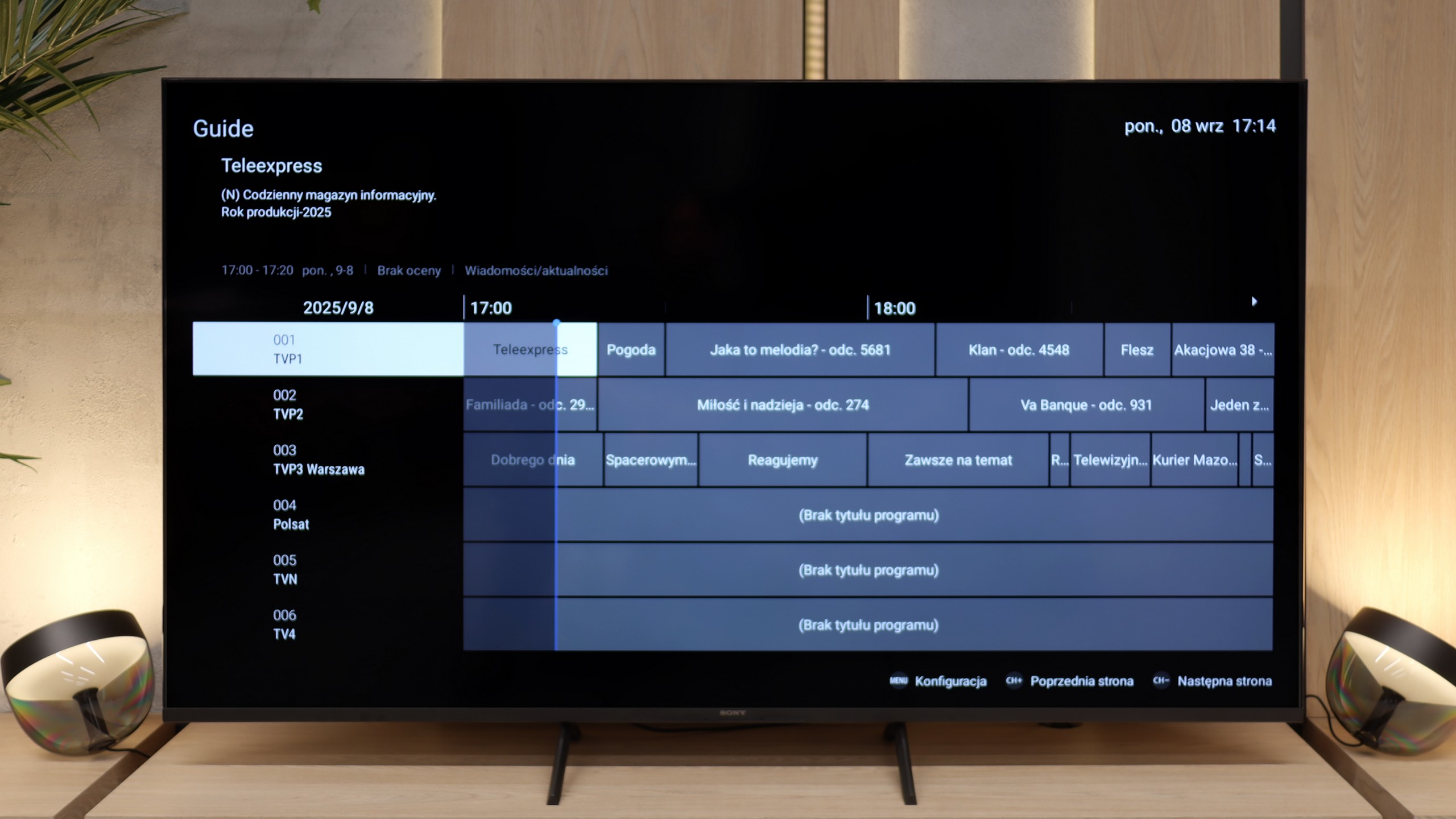
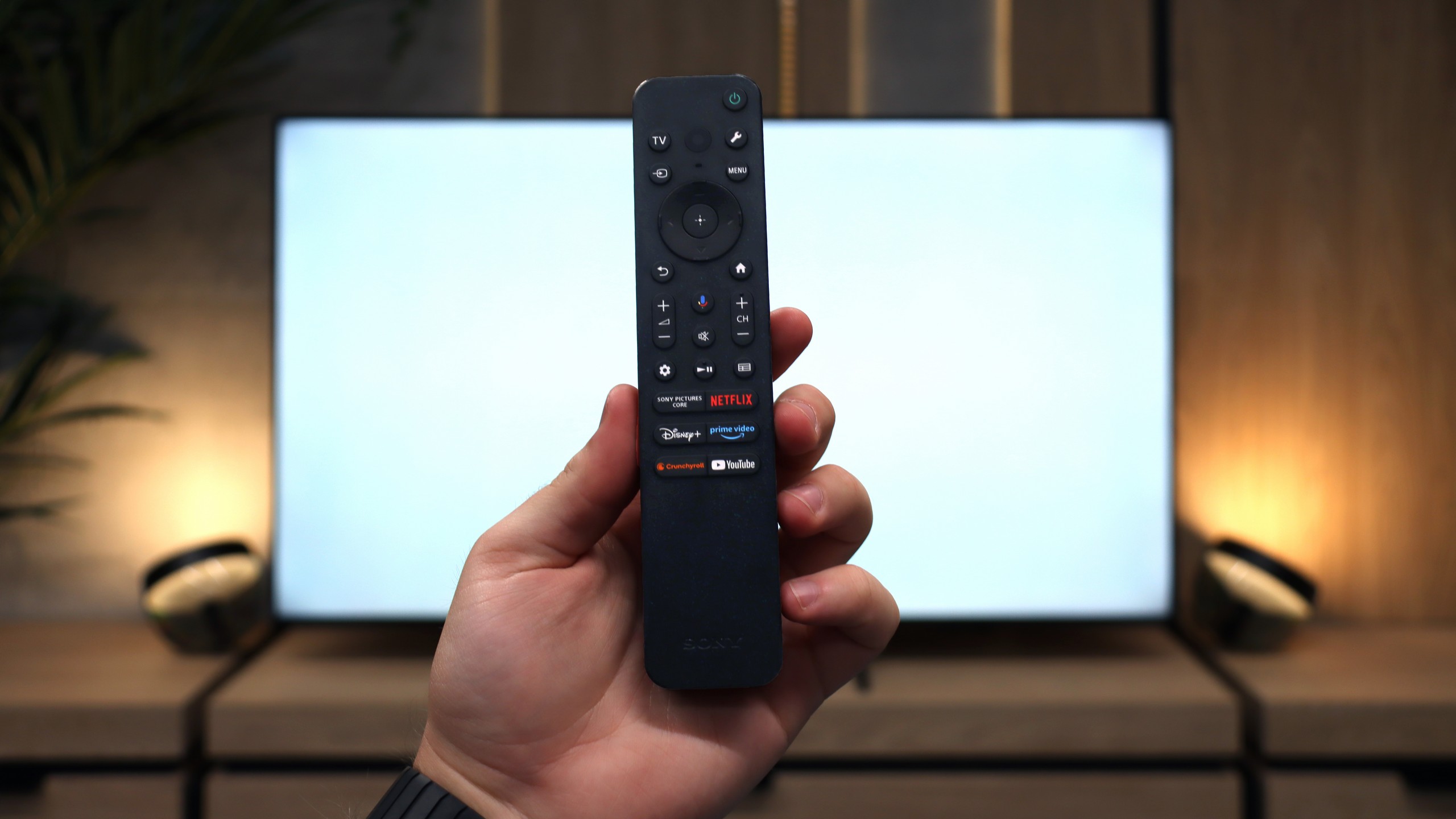
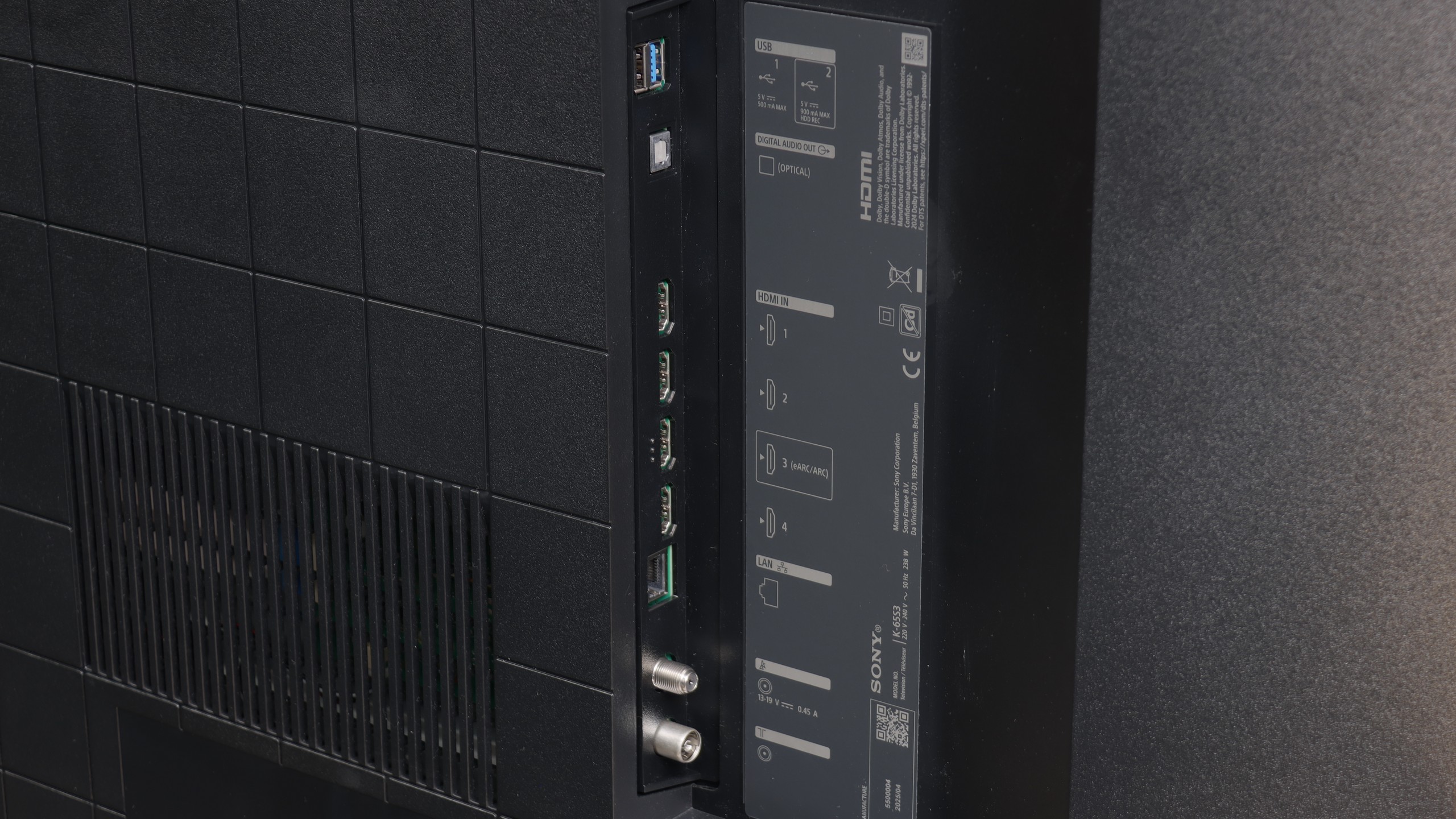
Television Features
The QN70F doesn't forget classic features that still matter to many users. On board, we find, among other things, picture-in-picture (PiP) mode, enabled by the presence of two tuners, teletext, and a "Sound Only" mode – perfect if we want to use the television like a radio. We can easily pair it with headphones or a soundbar via Bluetooth, and the remote control – despite the absence of a numeric keypad – works reliably, allowing us to operate other devices and additionally does not require us to aim at the screen. However, it should be noted that like all new Samsung models, we will not find USB recording functionality here. This is a system limitation that the brand clearly adheres to consistently.
Smart TV QN70F – Tizen
The Tizen system, developed by Samsung for years, is one of the most refined Smart TV interfaces. It is fast, intuitive, and feature-rich. The QN70F supports voice search (also in Polish), wireless screen mirroring from a phone (both via AirPlay and Miracast), as well as integration with watches and other devices in the Samsung ecosystem. All of this is connected by the SmartThings app, which allows you to control hardware, automate tasks, and connect devices in one network. (Not only Samsung brand devices). However, it is not perfect. Tizen is a closed system, so the selection of apps can be somewhat limited – especially in comparison to Google TV. All the major streaming services are in place, but if you use less popular services, it's worth checking before purchasing if they are available in the Samsung store.
Smart TV Features
The biggest advantage of the Bravia 3 in everyday use is the presence of the Google TV system. Thanks to it, we have access to one of the largest libraries of apps and streaming services, so regardless of whether someone mainly uses Netflix, Disney+ or smaller platforms, everything is within reach. The Google voice assistant also worked very well, managing to respond to our commands quite "cleverly". In theory, the Google TV system should operate very smoothly, as Sony has been implementing it better than many cheaper competitors for years. Unfortunately, in the case of the Bravia 3, it is not as great as we might have hoped. During testing, we noticed slight stutters in the interface, and some functions, such as screen mirroring, simply refused to work. One might get the impression that the processor in this model sometimes struggles to handle the demanding system, and not everything works as smoothly as we would expect.
Classic Features
Even in the cheapest series, Sony can remind us of its experience with various users. The set includes two remote controls. The first is modern and minimalist, with a small number of buttons, which works excellently for using apps and Google TV functions. The second is a classic remote with a richer set of keys and a numeric keypad, which will be especially appreciated by older people accustomed to traditional solutions. This is a nice nod towards different user groups, and it must be acknowledged that Sony has solved this very practically. It's a pity, however, that the ability to record content from TV tuners to USB memory has disappeared compared to the X75WL model. The manufacturer has completely eliminated this function, so if someone was attached to it, they will unfortunately not find it in the Bravia 3.
Playing files from USB
9/10
9.6/10
Supported photo formats:
Maximum photo resolution:

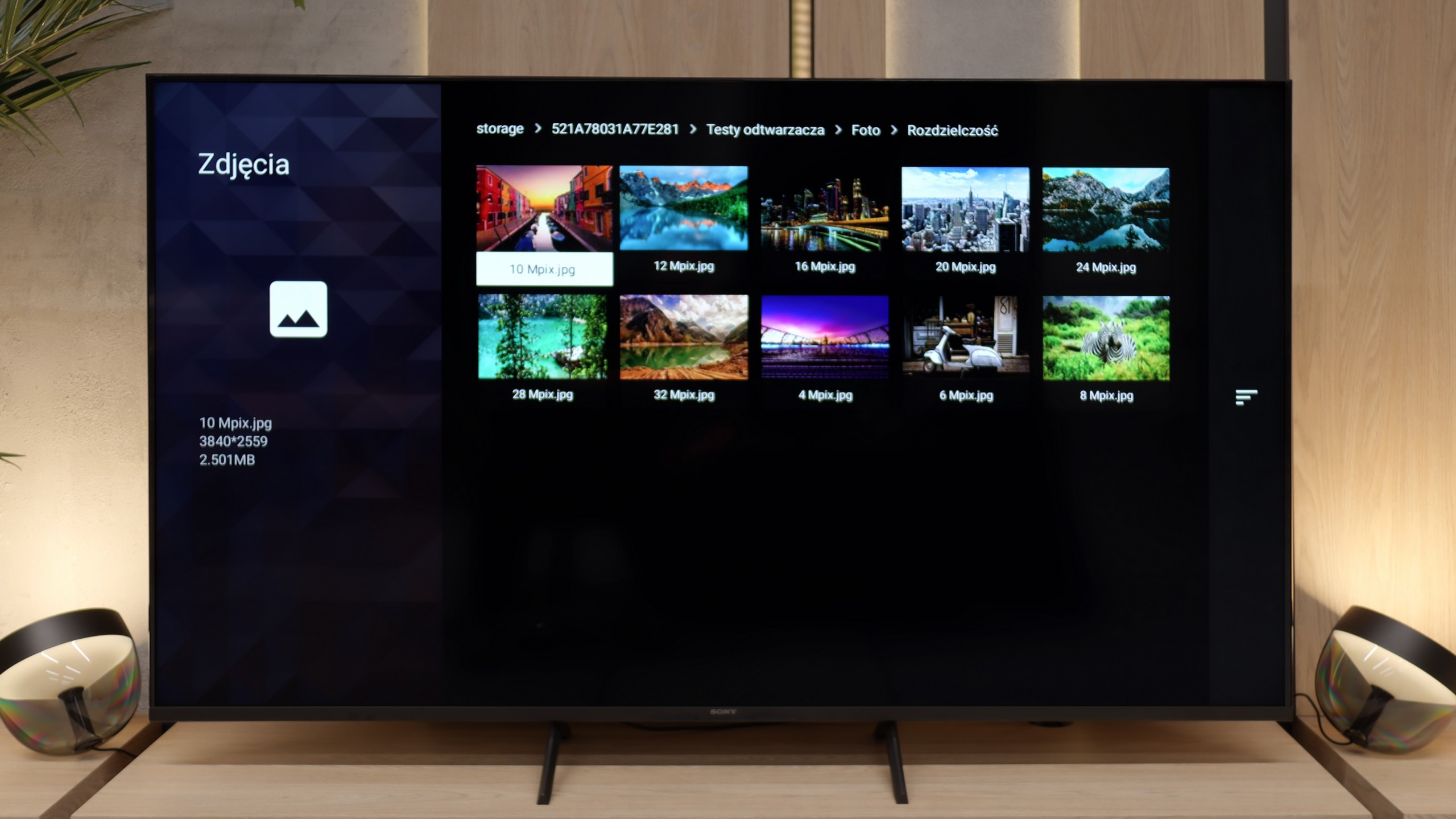
Samsung QN70F performs well with media playback – it easily runs photos, music, and videos in the most commonly used formats. During tests, it effortlessly opened JPG files, MP4, and subtitles in TXT format, so for most people, this will simply be sufficient. However, there were instances where a few files – despite having the correct extensions – would not play. It may be an issue with a specific version of the system, and the problem might disappear after future updates.
Here Sony has really done a great job. The built-in player works quickly and doesn’t “complain” when launching various formats. We didn’t have to reach for external applications like VLC, as the television handled even files that can cause quite a few problems on other models – such as HEIC photos from Apple devices. It's a small detail, but one that shows the manufacturer wanted the user to have a complete sense of convenience. By plugging a film onto a USB drive or holiday photos onto an external hard drive, you can simply connect them and start watching on the big screen right away. No fuss, no installing additional software, no searching for workarounds. This is truly a rarity in televisions, and it must be admitted that in this aspect, the Bravia 3 really pleasantly surprised us.
Apps
8.7/10
9.6/10














































Sound
6.4/10
6.5/10
- Maximum volume84dB88dB
- Dolby Digital Plus 7.1
- Dolby True HD 7.1
- Dolby Atmos in Dolby Digital Plus (JOC)
- Dolby Atmos in Dolby True HD
- DTS:X in DTS-HD MA
- DTS-HD Master Audio
The Samsung QN70F performs quite mediocrely in terms of sound, which shouldn't come as a surprise considering the exceptionally slim design of the television. The built-in speakers will manage perfectly well during everyday viewing of news or simpler content, but it's hard to talk about any depth or spaciousness of sound here. It's simply a compromise one has to accept when choosing an elegant and thin design over a bulkier casing with a better audio system.
Bravia 3 plays in a rather flat manner, but makes up for it with loudness. It is perfectly suited for watching classic television, as the dialogues are clear and the mid tones are easily heard. This type of characteristic will be particularly appreciated by older users who primarily value speech intelligibility. However, if someone expects something more from the sound, like stronger bass or a wider soundstage, it is still worth reaching for a soundbar. The television supports modern codecs, including Dolby Atmos and DTS:X, so an external sound system can easily take advantage of their potential. This assures that with a relatively modest expense, one can achieve a much fuller and more engaging sound.
Sound Quality Test
No sound test video
Acoustic Measurements
84dBC (Max)
75dBC
88dBC (Max)
75dBC


